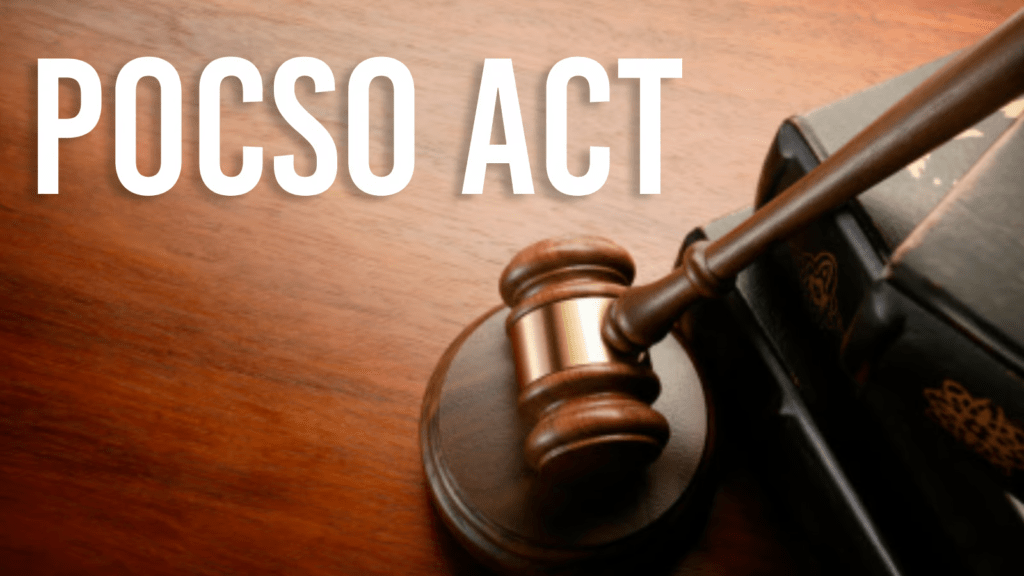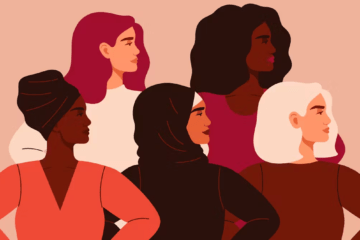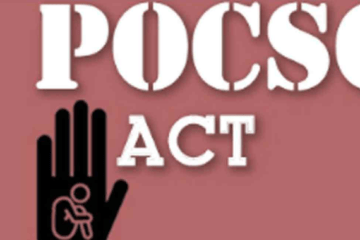
This article is written by Jahnavi Berlia of 3rd year of Trinity Institute of Professional Studies, New Delhi, an intern under Legal Vidhiya
ABSTRACT
The Protection of Children from Sexual Offences Act, 2012[1] is one of the important pieces of legislation brought by the Parliament to address the offences and harassment faced by children. Children being the vulnerable segments of society are often the victims of sexual offences and other misdoings. Thus, it was an important step to enact such laws to protect the rights of such children and safeguard them. It is a comprehensive law on sexual abuse that broadens the range of sexual offenses that can be committed, mandates reporting of abuse, and establishes standards for the evaluation of victims.
Sexual offences and harassment against children are increasing and high rate making it difficult to administer justice to all against these heinous crimes. Thus, special act has been passed and also, at present such cases are dealt by Fast Track Special Courts (FTSCs) for the expeditious disposal of cases.
KEYWORDS
Child, Abuse, Crime, POCSO, Sexual offence, Rape, Harassment, Assault, Special Court, Penetrative Sexual Assault, Child’s Care And Protection, Gender Neutral Legislation.
INTRODUCTION
The offences against children are increasing at a high rate. Children being vulnerable are susceptible to offences, especially sexual offences. There was a dire need for a legislation for protection of such children and severe punishment for committing such crime. Thus, Protection of Children from Sexual Offences Act, was enacted by the Parliament in 2012 under the Ministry of Women and Child Development, to prevent children aged less than 18 from offences like sexual harassment, sexual assault, and child pornography. The Protection of Children from Sexual Offences (POCSO) Act 2012 has been drafted to strengthen the legal provisions for the protection of children from sexual abuse and exploitation.
The POCSO Act 2012 was an important step toward creating a safer environment for the children of our country. This act asks for the setting up of Special Courts that are better equipped for the trial of such offenses and for matters connected therewith or incidental thereto. Also, after 2019 Fast track courts have been setup to ensure speedy trial take place. Thus, justice is done and does not only seem to be done. Under this act, any person below the age of 18 is defined as child[2] and all such children shall be protected irrespective of their gender. Also, strict provisions have been made under this act i.e. the minimum punishment under the act is 10 years.
CONSTITUTIONAL PROVISIONS
The Indian constitution provides rights to children as citizens of the country, and in keeping with their special status the State has even enacted special laws. The Constitution, promulgated in 1950, encompasses most rights included in the UN Convention on the Rights of the Child as Fundamental Rights and Directive Principles of State Policy. Right to life is a fundamental right provided by Article 21 of the Indian Constitution. It is essential that a child should be protected from the evils of society and could be brought up in a secure environment. Also, as per article 37[3], The Directive Principles of State Policy articulate social and economic rights that have been declared to be “fundamental in the governance of the country and it shall be the duty of the State to apply these principles in making laws. These directives have enabled the judiciary to give some landmark judgements promoting children’s rights, leading to Constitutional Amendments as is in the case of the 86th Amendment to the Constitution that made Right to Education a fundamental right[4]. Also, the State shall strive to promote the welfare of the people by securing and protecting as effectively as it may a social order in which justice, social, economic and political, shall inform all the institutions of the national life[5]. There are various other provisions in the Indian constitution that are specifically for the children, such as- article 21A, 24, 39(e), 39(f), & 45.
PRE-POCSO LAWS
In India, child sexual abuse has been largely neglected, and it has never been recognized as a criminal offense until recently. Rape, prostitution, and human trafficking were among the few recognized sexual crimes against minors in India. They were all dealt with under the broad provisions of the Indian Penal Code, 1860, which made no difference between adult and child victims of the crime. The punishment given to offender is same under IPC irrespective of the age of the victim.
However, in The Bharatiya Nyaya Sanhita, 2023 (BNS), new law introduced by parliament in replacement of IPC, there is a distinction in penalties for committing offence against child and women. The BNS provides for higher penalties in case of offences against children. In most cases, it provides that a victim below the age of 18 years be treated as a child. And, the penalty for rape and gang rape of women and children is different.
Other acts under which provision for provided include- The Information Technology Act, 2000 prohibited the publishing and transmission of pornographic material. The Immoral Traffic (Prevention) Act, 1956, deals with the criminalization of prostitution and human trafficking in the Indian subcontinent. As a result of the lack of specific legislation addressing a range of various other forms of sexual exploitation of children such as Child Sexual Assault (not amounting to rape), Sexual Harassment, and Child Pornography, as well as growing concerns about the rising trend of sexual violence against children in India, new comprehensive legislation known as the Protection of Children Against Sexual Offences (PCASO) was enacted.
SALIENT FEATURES OF THE POCSO ACT
- Confidentiality of the victim’s identity: under section 23 of the act the identity of the child shall not be disclosed to media unless the Special Court has allowed for the same. Here the identity includes name, address, photograph, family details, school, neighbourhood and any other particulars which may lead to the disclosure of the identity of the child.
In the landmark case of Bijoy @ Guddu Das v. The State of West Bengal[6] , the Calcutta High Court reiterated the law made under Section 23 and declared that any person including a police officer shall be prosecuted if he/ she commits such a breach. Also, the Supreme Court in Nipun Saxena & Anr v Union of India[7] emphasized the need for extra care and protection for child sexual assault victims by keeping their identities and names hidden.
2. Gender-neutral provisions: One of the biggest short-coming of the IPC was that it only punished sexual crime against women. This act overcomes this as the POCSO act is gender neutral and protect children of both the sexes. It does not create any distinction between the victim or the perpetrators on the basis of their gender.
The NGO Sakshi v. Union of India[8] established that existing criminal laws were inadequate in handling instances of child sex abuse in the first instance, through their PIL filed before the Supreme Court. Sexual penetration of a female victim was prosecuted under Sections 375 and 376(2) of the IPC, whereas sexual penetration of a male victim was prosecuted under Section 377 of the IPC. Non-penetrative sexual offenses committed against a female child were dealt with under sections 354 and 509 of the IPC, but a similar rule did not exist for a male child victim
3. Mandatory reporting of child abuse cases: Often such offences are committed are those people who are incidental to the victim. In many cases, the elders attempt to hide these matters due to the stigma that is attached to these crimes. This act thus mandates the third party to report such crime if he/she has knowledge or apprehension of such crime. Also, if such person fails to report such crime shall be punished under section 21 of the act. In, Shankar Kisanrao Khade v. State of Maharashtra[9], the Supreme Court laid down guidelines regarding reporting the offence. In this case, rape was committed on an 11-year-old child with moderate intellectual disability but it was neither reported to the police nor to the juvenile justice board. The Court observed that children with intellectual disabilities are more vulnerable and therefore, the institutions which house them have the responsibility to report sexual abuse incidents against them. Furthermore, it was laid down that non-reporting of crime in accordance with the provisions of the POCSO Act is a serious offence.
4. Child-friendly investigation and trial: Sections 24, 26 and 33 of the POCSO Act lay down the procedure of investigation and trial which has been formulated keeping in mind the needs of a child. The following points are taken into consideration while investigating any crime under POCSO Act:
- The statement of the child is to be recorded at his/ her place of residence and generally by a woman police officer.
- The officer who is to record the statement of the child should not be wearing a uniform.
- The officer should ensure that the child does not come in contact with the accused during the examination.
- The statement to be recorded in the language spoken by the child
- A child is not to be detained in the police station at night.
- The officer should ensure that the identity of the child is not revealed.
- The statement of the child is to be recorded in the presence of a person in whom the child has trust, for example, their parents.
- The special court has to ensure that the child is not called to repeatedly testify in the trial court.
- Aggressive questioning of the child is not permitted during the trial.
5. It defines different forms of sexual abuse, including penetrative and non-penetrative assault, as well as sexual harassment and pornography. And the punishment for such offences have been explicitly differentiated as follow-
| Name of the offence | Relevant provision of the POCSO Act | Punishment |
| Penetrative sexual assault on a child of 16 to 18 years of age | Section 4 | Minimum imprisonment of 10 years which may extend to imprisonment for life plus fine |
| Penetrative sexual assault on a child below 16 years of age | Section 4 | Minimum imprisonment of 20 years which may extend to imprisonment for the remainder of natural life plus fine |
| Aggravated penetrative sexual assault | Section 6 | Minimum rigorous imprisonment of 20 years which may extend to imprisonment for the remainder of natural life plus fine or death |
| Sexual assault | Section 8 | Imprisonment of 3 to 5 years plus fine |
| Aggravated sexual assault | Section 10 | Imprisonment of 5 to 7 years plus fine |
| Sexual harassment | Section 12 | Imprisonment which can extend upto 3 years plus a fine. |
| Use of a child for pornography | Section 14(1) | First conviction- imprisonment extending up to 5 years second or further convictions- imprisonment extending up to 7 years plus fine |
| se of a child for pornography while committing an offence under Section 3 | Section 14(2) | Minimum imprisonment of 10 years extending up to imprisonment for life plus fine |
| Use of a child for pornography while committing an offence under Section 5 | Section 14(3) | Rigorous imprisonment for life plus fine |
| Use of a child for pornographic purposes while committing an offence under Section 7 | Section 14(4) | Imprisonment of 6 to 8 years plus fine |
| Use of a child for pornographic purposes while committing an offence under Section 9. | Section 14(5) | Imprisonment of 8 to 10 years plus fine |
| Offence of storing pornographic material involving a child for commercial purposes | Section 15 | Imprisonment extending upto 3 years or fine or both |
6. Monitoring on implementation of the act: The State Commissions for the Protection of Child Rights (SCPCRs) and the National Commission for the Protection of Child Rights (NCPCR) have been given the authority to monitor the implementation of the act’s provisions. Both of these authorities are statutory in nature.
7. Special courts- under the chapter VII of the act special courts are setup at each district by state government in consultation with the chief justice of the respective high court. The main purpose of such courts is to allow speedy trial. The procedure followed by such courts is explained in chapter VIII of the act. During the trial, it is the duty of the court to ensure that the procedure takes place in child friendly atmosphere. Also, section 35 of the act minimize the time it takes to go to trial, and sets a 30-day limit for gathering evidence and requires trials to be finished within a year, as much as feasible
8. Trials to be conducted in camera: the special courts shall try cases in camera and in the presence of the parents of the child or any other person in whom the child has trust or confidence[10]:
9. Child-friendly procedures for medical examination: The child victim who is in need of urgent medical care and protection, SJPU/local police shall within 24 hours of receiving information about the crime, arrange to take such child to the nearest hospital or medical care facility centre for emergency medical care. If a person has come directly to the hospital without the police requisition, the hospital is bound to provide treatment and conduct a medical examination with consent of the survivor/parent/guardian. However, the doctor is mandated to report such instances invariably to the police[11].
CONCLUSION
The Protection of Children from Sexual Offences Act, 2012 is a special law which tries to cover all the aspects of sexual offences and provide stringent punishment for the same. Though this act may face various challenges in its implementation, it plays a vital role by providing justice and protection to the children who are vulnerable and weak. The act was the necessity to ensure that such crimes are being reported and awareness is spread about it. The child friendly procedure so followed by the police and the court provides safe environment to the victims avoiding re-victimization of the Child at the hands of the judicial system.
REFERENCES
- https://wcd.nic.in/sites/default/files/POCSO%20Act%2C%202012.pdf
- https://www.jkpi.org/pocso-act-features-challenges-controversies-and-recommendations/
- https://blog.ipleaders.in/pocso-act-everything-you-need-to-know/
- https://unacademy.com/content/upsc/study-material/general-awareness/provisions-of-the-pocso-act/
- https://lawnotes.co/the-protection-of-children-from-sexual-offences-act-pocso/
- https://www.researchgate.net/profile/Shalini-Naik/publication/351902644_Forensic_Psychiatry_in_India_-_Interface_of_Indian_Laws_and_Mental_Health/links/611500671e95fe241ac6a293/Forensic-Psychiatry-in-India-Interface-of-Indian-Laws-and-Mental-Health.pdf#page=73
- https://www.researchgate.net/profile/Harikumar-Pallathadka/publication/356718818_A_Socio-Legal_Analysis_of_Child_Sexual_Abuse_in_India/links/61a8bb2aca2d401f27b9e930/A-Socio-Legal-Analysis-of-Child-Sexual-Abuse-in-India.pdf
- https://byjusexamprep.com/upsc-exam/pocso-act-upsc#toc-9
[1] The Protection of Children from Sexual Offences Act, 2012 available at https://wcd.nic.in/sites/default/files/POCSO%20Act%2C%202012.pdf
[2] The Protection of Children from Sexual Offences Act, Sec. 2(d), No. 32, Acts of Parliament, 2012
[3] INDIA CONST. art. 37
[4] https://www.haqcrc.org/child-rights/constitution-of-india/
[5] INDIA CONST. art. 38, amended by the Constitution (Forty-fourth Amendment) Act, 1978
[6] Bijoy @ Guddu Das v. The State of West Bengal, (2017) 2 Cal LJ 224
[7] Nipun Saxena & Anr v Union of India (2019) 2 SCC 703
[8] NGO Sakshi v. Union of India, AIR 2004 SC 3566
[9] Shankar Kisanrao Khade v. State of Maharashtra, (2013) 5 SCC 546
[10] The Protection of Children from Sexual Offences Act, Sec. 37, No. 32, Acts of Parliament, 2012
[11] The Protection of Children from Sexual Offences Act, Sec. 20, No. 32, Acts of Parliament, 2012
Disclaimer: The materials provided herein are intended solely for informational purposes. Accessing or using the site or the materials does not establish an attorney-client relationship. The information presented on this site is not to be construed as legal or professional advice, and it should not be relied upon for such purposes or used as a substitute for advice from a licensed attorney in your state. Additionally, the viewpoint presented by the author is of a personal nature.




0 Comments